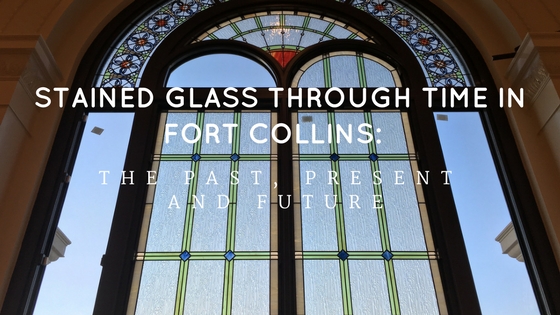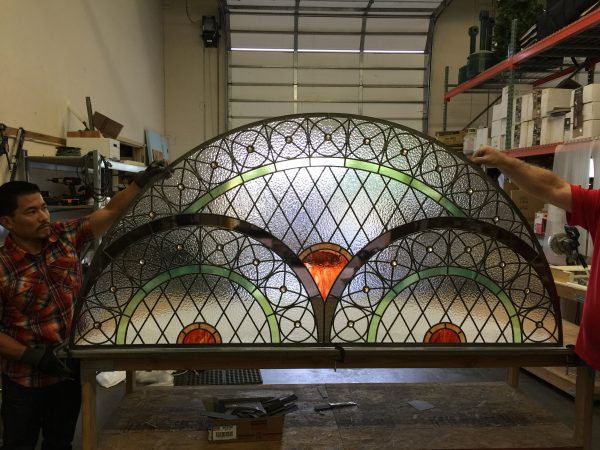
If you’ve ever taken a walk through Old Town Fort Collins or one of the many other nearby historic areas such as Bellvue, Loveland, or Estes Park, you probably noticed that many of the older buildings have stained glass windows. Fort Collins has a reputation as artsy town, so stained glass windows are very common. But the art itself originated far from the city of Fort Collins.
Long before stained glass reached Fort Collins, it found its first role in Ancient societies. In early Egyptian and Roman times, colored glass began being manufactured to be used to make jewelry, pottery, and other small objects.
It wasn’t until the 4th and 5th century that stained glass actually found its way into religious buildings. The first known artworks similar to the concept of stained glass windows were found in early Christian churches from around this time period. An unknown artist had discovered that by placing thin pieces of alabaster in the window frames, they could produce a stained glass like effect.
In the 7th century, artisans began using actual colored glass in place of clear glass in church windows. Fragments of these windows were found at Jarrow and Monkwearmouth. Similarly, in the Middle East, the glass industry took off in Syria and churches started incorporating windows with gilded colorless glass. By the 8th century, the stained glass movement reached Southwest Asia. Windows with geometric patterns and floral motif designs were added to the walls of mosques, palaces, and public spaces.
During the Middle Ages, stained glass reached the height of its popularity. Its primary purpose at this time was to educate church goers about the stories and lessons in the Bible. Large, detailed windows featuring paintings or designs of Biblical scenes and figures were common. It was during this time that some of the most famous works were produced, including the Chartres Cathedral, Canterbury Cathedral, Sainte-Chapelle, and Lincoln Cathedral.
Over the years, the stained glass movement continued to grow and evolve. Eventually, the use of stained glass extended beyond the church. Stained glass found its way into residential and commercial architecture and was popularized by artists such as Louis Comfort Tiffany, Frank Lloyd Wright, the Greene Brothers, and Charles Rennie Mackintosh. In addition to windows, stained glass signs, ceilings, lights, and lamps all became very popular.

These are trends that are still prevalent even today. In luxury homes, stained glass is commonly used for entryways, bathrooms, and kitchens as a way of creating privacy. Business owners continue to incorporate stained glass decor as a way of appealing to and attracting customers. Where the future of stained glass lies is uncertain, but history indicates that its future looks promising.
If you would like to learn more about stained glass or are interested in obtaining stained glass for your Fort Collins home, church, or building, please do not hesitate to contact us. We would be more than happy to assist you.
© Scottish Stained Glass 2000- All Rights Reserved | A Part of Scottish Group Companies